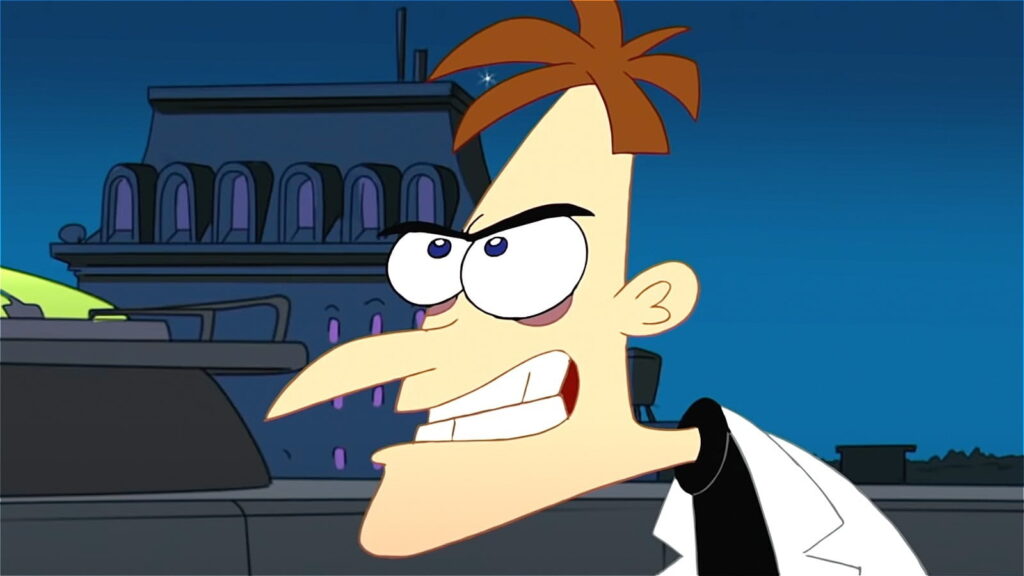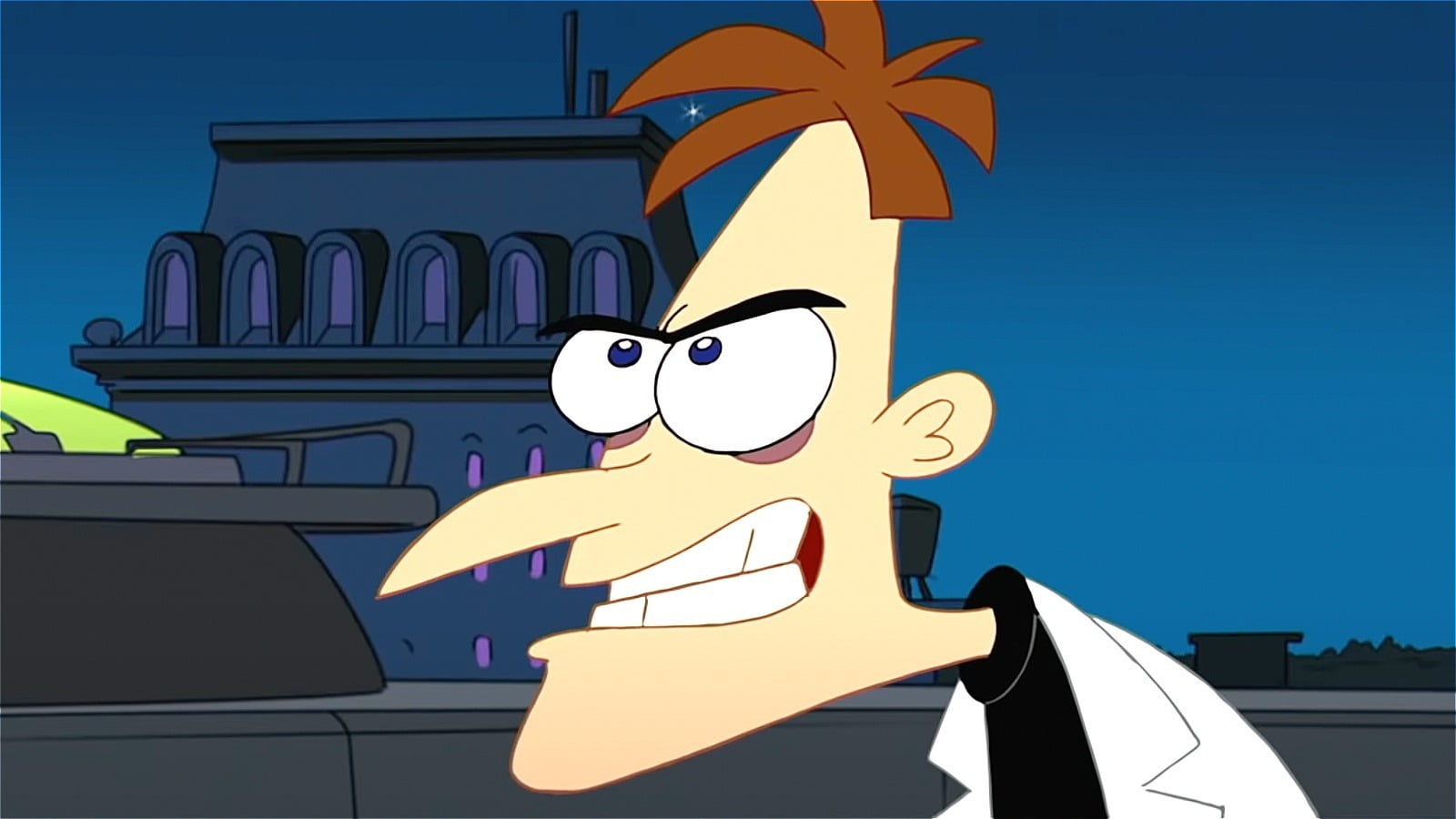
Unpacking the ‘Villain’ Label: Is Dr. Doofenshmirtz Really a Villain in Phineas and Ferb?
Dr. Heinz Doofenshmirtz, the self-proclaimed evil scientist from Disney’s beloved animated series Phineas and Ferb, is a character defined by his elaborate schemes and equally elaborate backstories. But is he truly a villain? This article delves into the complexities of Doofenshmirtz’s character, examining his motivations, actions, and the impact he has on the world around him. While often labeled a villain due to his ‘evil’ inventions and attempts to disrupt the Tri-State Area, a closer look reveals a more nuanced and even sympathetic figure. The question of whether Doofenshmirtz is a true villain is central to understanding the show’s humor and its underlying themes of family, acceptance, and the power of positive change. We’ll explore the arguments for and against his villainous status, considering everything from his childhood traumas to his surprisingly close relationship with his nemesis, Perry the Platypus.
The Case for Doofenshmirtz as a Villain
On the surface, the argument for Doofenshmirtz being a villain seems straightforward. He consistently creates ‘inators’ designed to wreak havoc on the Tri-State Area. These inventions range from the mildly inconvenient to the potentially catastrophic. He often declares his intention to take over the world, or at least the local area, and his actions frequently put innocent bystanders at risk. Consider his various schemes: attempting to darken the sky with a giant magnet, trying to eliminate all lawn gnomes, or even plotting to reverse the Earth’s rotation. These are hardly the actions of a benevolent individual.
Furthermore, Doofenshmirtz actively engages in activities traditionally associated with villainy. He constructs secret lairs, employs (albeit incompetent) henchmen, and constantly battles against a secret agent (Perry the Platypus). His entire persona is built around the idea of being an evil genius, and he clearly relishes the role, even if he’s consistently failing at it. He frequently refers to himself as evil, solidifying the perception that he is, in fact, a villain. The constant conflict between Perry the Platypus and Dr. Doofenshmirtz is a cornerstone of the show’s narrative, reinforcing the traditional hero-versus-villain dynamic. The persistent nature of Doofenshmirtz’s schemes, despite their repeated failures, adds to the perception of him as a committed, if inept, villain.
The Case Against: A Sympathetic Antagonist?
However, a deeper examination of Doofenshmirtz’s character reveals a more complex and sympathetic figure. His ‘evil’ schemes are almost always rooted in childhood trauma and feelings of inadequacy. He often recounts stories of a difficult upbringing, marked by neglect, rejection, and a general lack of love and attention. He was forced to wear girls’ clothes, stand as a lawn gnome, and was even replaced by a gnome at his own birthday party. These experiences have clearly shaped his worldview and fueled his desire for revenge against a world that he feels has wronged him.
Moreover, Doofenshmirtz’s inventions, while often intended for nefarious purposes, are frequently motivated by petty grievances or a desire to solve everyday problems in an overly complicated way. He might create an ‘inator’ to get rid of pigeons that bother him, or to win a science fair that he feels he deserves to win. His goals are rarely truly malicious, and his actions often have unintended consequences that he doesn’t foresee. He is more of a nuisance than a genuine threat. His ‘evil’ plans are often more comical than menacing, and his failures are consistently entertaining.
Perhaps the most compelling argument against Doofenshmirtz as a true villain is his relationship with Perry the Platypus. While they are technically arch-enemies, their interactions often resemble a bizarre form of friendship. Doofenshmirtz genuinely cares about Perry, and Perry, in turn, seems to have a certain fondness for Doofenshmirtz. They have a mutual respect and understanding, and their battles are often more like a ritual than a genuine attempt to harm each other. In many episodes, Doofenshmirtz even expresses concern for Perry’s well-being, highlighting the underlying humanity of his character. This unusual dynamic challenges the traditional villain archetype and suggests that Doofenshmirtz is not entirely evil. [See also: Perry the Platypus: Secret Agent or Loyal Friend?]
The Psychology of a ‘Villain’
Understanding Doofenshmirtz requires delving into the psychology behind his actions. His childhood traumas have clearly left him with deep-seated insecurities and a need for validation. His ‘evil’ schemes can be seen as a desperate attempt to gain attention and prove his worth to a world that he feels has rejected him. He craves recognition and acceptance, and he believes that by becoming a powerful villain, he can finally achieve these things.
However, Doofenshmirtz’s methods are ultimately self-defeating. His constant failures only reinforce his feelings of inadequacy, and his attempts to harm others ultimately isolate him further. He is trapped in a cycle of negativity, unable to break free from the patterns of behavior that have defined his life. His character is a poignant reminder of the lasting impact of childhood experiences and the importance of addressing underlying emotional issues.
Furthermore, Doofenshmirtz’s lack of genuine malicious intent sets him apart from typical villains. He doesn’t seek to cause harm for the sake of harm; his actions are driven by a desire to overcome his own insecurities and achieve a sense of belonging. This makes him a more relatable and sympathetic character, even when he’s engaged in ‘evil’ schemes. The show cleverly uses humor to explore these complex psychological themes, making Doofenshmirtz a compelling and multifaceted character.
The Evolution of Doofenshmirtz
Throughout the series, Doofenshmirtz undergoes a subtle but significant evolution. He gradually becomes less focused on his ‘evil’ schemes and more focused on his relationships with others, particularly his daughter, Vanessa. As he spends more time with Vanessa, he begins to understand the importance of family and the value of genuine connection. He starts to prioritize her happiness over his own ambitions, and he even uses his inventions to help her in various ways. This transformation highlights the potential for positive change within even the most seemingly villainous characters. [See also: Vanessa Doofenshmirtz: More Than Just a Goth Teenager]
In later seasons, Doofenshmirtz even begins to collaborate with Perry the Platypus on occasion, working together to solve problems and help others. These instances demonstrate that he is capable of empathy and compassion, and that he is not inherently evil. He is simply a flawed individual who has made some poor choices in the past, but who is ultimately capable of redemption. The character arc of Doofenshmirtz serves as a powerful message of hope and the possibility of personal growth.
So, Is He a Villain?
Ultimately, the question of whether Doofenshmirtz is a true villain is open to interpretation. While his actions often align with the traditional definition of villainy, his motivations and his relationships with others paint a more complex picture. He is a flawed and insecure individual who has been shaped by a difficult past, but he is also capable of empathy, compassion, and even friendship. He is more of an antagonist than a true villain, a character who creates conflict and challenges the protagonists, but who is not inherently evil. He is a comedic villain, designed more for laughs and lighthearted conflict than true malevolence. The ‘villain’ label may be too simplistic to fully capture the nuances of his character.
Perhaps the most accurate description of Doofenshmirtz is that of a sympathetic antagonist. He is a character who we can laugh at, but also empathize with. He is a reminder that even the most seemingly villainous individuals have their own struggles and insecurities, and that everyone is capable of change. He adds depth and complexity to the show, making it more than just a simple children’s cartoon. The ongoing debate about whether Doofenshmirtz is a true villain speaks to the enduring appeal and the thought-provoking nature of Phineas and Ferb.
In conclusion, while Dr. Heinz Doofenshmirtz embodies many of the characteristics of a villain, a closer examination reveals a more nuanced and sympathetic character. His motivations are rooted in childhood trauma, his actions are often more comical than malicious, and his relationship with Perry the Platypus defies the traditional hero-villain dynamic. He is a reminder that appearances can be deceiving, and that even the most seemingly villainous individuals are capable of change. Therefore, labeling him simply as a villain would be a disservice to the complexity and depth of his character within the context of Phineas and Ferb.

